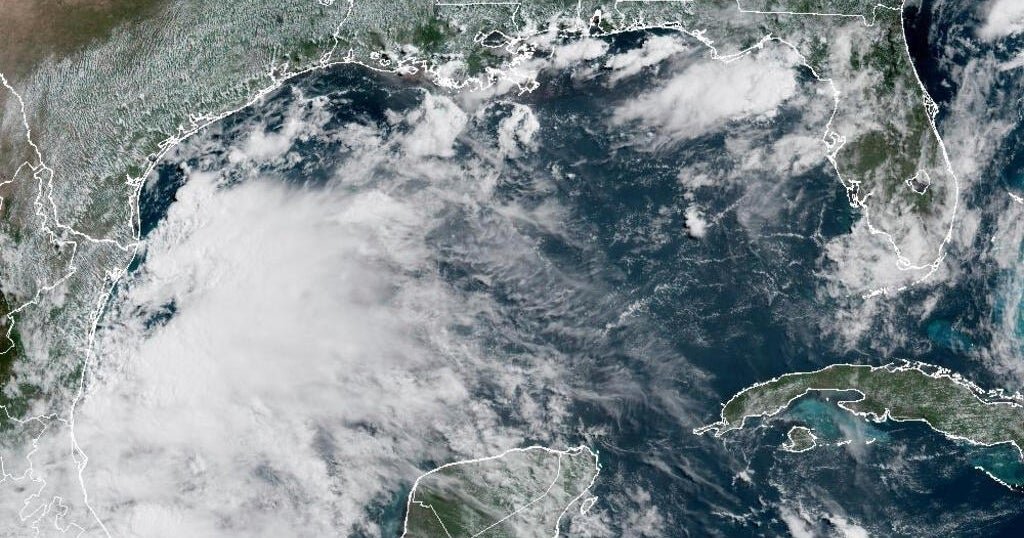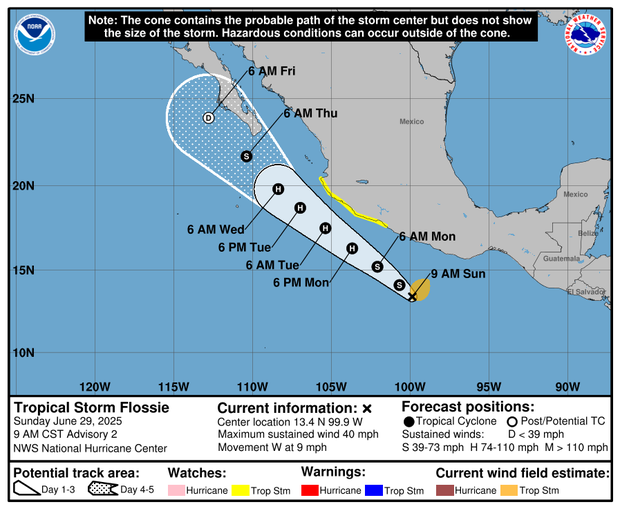Two tropical storms formed Sunday on both of Mexico’s coasts, and they are expected to drench the region for several days.
Barry, the second named storm of this year’s Atlantic hurricane season, became a tropical depression by Sunday night, when it made landfall shortly before 11 p.m. ET. It made landfall over Mexico’s east coast about 15 miles south-southeast of Tampico, according to the U.S. National Hurricane Center in Miami.
As of 11 p.m. it had maximum sustained winds of 35 mph and was moving northwest at 9 mph.
NOAA via AP
Barry is expected to rapidly weaken as it moves inland. Forecasters, who issued a tropical storm warning, said the storm could dump three to six inches of rain with an isolated maximum total of 10 inches across Veracruz, San Luis Potosi and Tamaulipas through Monday.
Meanwhile, off Mexico’s southwest coast, Tropical Storm Flossie formed on Sunday. As of 10 p.m. ET, it was located about 215 miles south-southwest of Acapulco and was moving west-northwest at 8 mph with maximum sustained winds of 40 mph.
Flossie is expected to strengthen into a hurricane on Monday or Tuesday but will remain in open water just west of Mexico, forecasters said.
NOAA
The storm could dump three to six inches of rain across Oaxaca, Guerrero, Michoacan, Colima and Jalisco through early next week.
The Pacific hurricane season began on May 15, while the Atlantic hurricane season is from June 1 until Nov. 30, with peak activity typically occurring between mid-August and mid-October.
NOAA officials predicted a 60% chance of an “above-normal” Atlantic hurricane season, with between 13 to 19 named storms. Six to 10 of those are expected to strengthen into hurricanes, and three to five could become major hurricanes, forecasters said.


